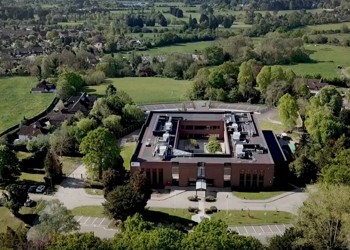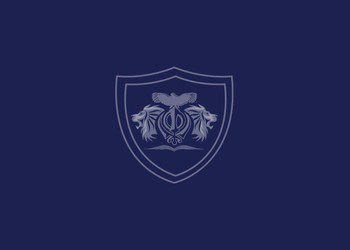
- Home
- Atam Secondary
- Safeguarding
- Sexual Exploitation
Sexual Exploitation
What is CSE (Child Sexual Exploitation)?
Child sexual exploitation is a form of child sexual abuse. It occurs where an individual or group takes advantage of an imbalance of power to coerce, manipulate or deceive a child or young person under the age of 18 into sexual activity
(a) in exchange for something the victim needs or wants, and/or
(b) for the financial advantage or increased status of the perpetrator or facilitator.
The victim may have been sexually exploited even if the sexual activity appears consensual. Child sexual exploitation does not always involve physical contact; it can also occur through the use of technology.
Violence, coercion and intimidation are common in CSE. A common feature of CSE is that the child or young person does not recognise the coercive nature of the relationship and does not see themselves as a victim of exploitation. Young people often trust their abuser and do not understand that they are being abused. They may depend on their abuser or be too scared to tell anyone what's happening. Victims of child sexual exploitation are often tricked into thinking their abuser is a friend or even a ‘boyfriend’.
Abusers are usually very skilled at grooming the child and those around the child who would otherwise protect them.
What is grooming?
Grooming is preparing a child for sexual abuse. Groomers choose victims who are vulnerable. They may have few friends, be a child looked after by the local authority (in care), be naïve and/or innocent, looking for affection, have low self-esteem, special educational needs or have a troubled family life. However, any child can be a potential victim.
Groomers spend time gaining the trust of their victim or victims and make them dependant on the groomer by supplying something the victim does not have e.g. affection, accommodation, access to drugs or alcohol etc. Once a groomer has the child’s trust or control over them, they will then move on to physically or sexually abusing the child.
Groomers prepare their victim to accept unacceptable behaviour in the future; they ensure the victim does not use language to raise suspicions e.g. calling a sexual act a ‘cuddle’. An essential part of grooming is keeping the victim silent.
Groomers do not only groom their victim, they groom the whole environment e.g. they groom parents/carers not to question unusual behaviour; they “normalise” the behaviour.
Grooming can be done on-line via chat rooms, social networking sites, gaming sites and there are many well documented cases of abusers misrepresenting themselves to young people on line. Groomers can approach 400 young people in one night on-line searching for a potential victim. Children may be persuaded to post sexual images on the Internet/mobile phones, take part in sexual activity using a webcam or smartphone or have sexual conversations via text or email. Children may then be threatened with exposure unless they agree to continue their posts or take part in sexual activities. They might also threaten the child saying they will hurt their family or friends if they tell anyone.
Grooming can also be done through direct contact. It is not uncommon for a child who has been “groomed” to be passed amongst a group of abusers.
CSE and gangs
Sexual exploitation is used in gangs to:
- exert power and control over members
- initiate young people into the gang
- exchange sexual activity for status or protection
- entrap rival gang members by exploiting girls and young women
- inflict sexual assault as a weapon in conflict.
Who sexually exploits young people?
People who sexually exploit children are often described as highly manipulative individuals. They exert power over young people through physical violence, emotional blackmail or financial pressure, for example holding them in debt or making them dependent on what the abuser is providing e.g. alcohol, drugs, affection.
- children and young people often only know their abuser by an alias, nickname or appearance
- victims may be passed between abusers and assaulted by multiple perpetrators
- children and young people are often moved from location to location and abused in each place
What are the signs of CSE?
Sexual exploitation can be difficult to identify as signs can be mistaken for “normal teenage behaviour”.
Those involved in CSE may:
- be involved in abusive relationships, intimidated and fearful of certain people or situations
- associate with groups of older people, or antisocial groups, or with other vulnerable peers
- associate with other young people involved in sexual exploitation
- be involved in gangs, gang fights, gang membership
- have older boyfriends or girlfriends
- spend time at places of concern, such as hotels or known brothels
- not know where they are, because they have been moved around the country
- go missing from home, care or education
Other indicators include:-
- being withdrawn
- suddenly behaving differently
- anxiety
- being clingy
- being depressed
- aggression
- problems sleeping or nightmares
- eating disorders or changes in eating habits
- wetting the bed or soiling clothes
- taking risks
- frequent absence from school
- obsessive behaviour
- misuse of drugs or alcohol
- self-harm or thoughts about suicide
- sexually activity at a young age, promiscuity or use of sexual language or knowledge inconsistent with age
- have physical symptoms e.g. anal or vaginal soreness, an unusual discharge, have a sexually transmitted infection (STI), become pregnant
What should you do if you suspect a girl or boy is the victim of CSE?
Members of staff who think a student is the victim of or is at risk of CSE should report this as a child protection issue to the Safeguarding Lead.
Further information
Further informaiton and guidance about keeping your child safe from exploitation can be found at www.parentsprotect.co.uk

